Xtrakit's 1/72 scale
Saunders Roe SR. A-1
Flying Boat Fighter Pt. 1
by Roland Sachsenhofer
|
Saunders Roe SR. A-1 Flying Boat Fighter |

My first reaction to the film footage of an SRA-1 in flight can be summarised as: "what an elegant and impressively agile aircraft this flying boat was! This impression surprised me myself, because when one sees this machine in still images, it is above all the unusually ponderous and squat proportions of this flying boat that force their way into one's attention. On land, this irritating impression even increases: jacked up on its beaching gear, the SRA-1 stretches the enormous opening of the air intake far into the air, while the drop of the cockpit canopy almost seems to disappear in relation to the considerable depth of the fuselage. Whatever the aesthetic assessment, one thing is certain: the Saunders-Roe SR. A-1 is a most unusual creation!
This design reflects several concerns: conceived in wartime 1943, it was intended to be a water-based fighter that could operate from calm waters near the coast or from wider rivers. This would cover operational areas that could not be reached by land-based aircraft; any performance deficits of a seaplane compared to land-based aircraft would be justified with this argument. That this concept could work and had relevance was proven at the time by the Japanese Empire with successful seaplanes such as the A6M2N Rufe and the more modern N1K Ky?f?. The SR. A-1 was accordingly also preferentially intended for use in the Pacific.
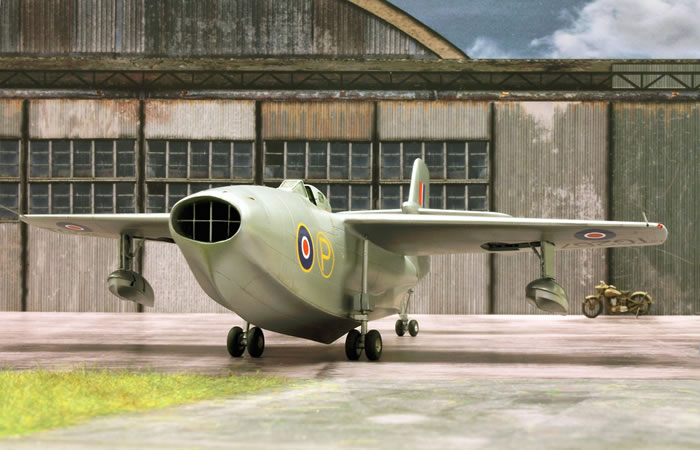
A second moment that determined the appearance of the SR. A-1 was the propulsion system in the form of two jet engines. From the beginning, the installation of jet turbines was planned; originally, two Halford H1 radial turbines with relatively weak 12Kn thrust were to be used, but the three prototypes were finally equipped with the more powerful Metropolitan Vickers (MV) F-2 turbines with up to 17Kn. Thus equipped, the mighty flying boat reached 824 Km/h. With a maximum take-off mass of 7360 kg, the range was over 1900 kilometres - not bad for that time! All three prototypes had the installations for the planned armament of four 20mm Hispano-Suiza Mk.5 machine guns; the muzzles of these MKs can be seen in the bow above the air intake.
After initial concept studies, the final form was found under the internal designation SR.44 in May 1944. The design of the aircraft avoided the contact of the intake opening with spray water with the nose pulled far upwards, whereas the installation of the two turbines in the wing roots guaranteed a short thrust tube. This was a serious requirement given the low-power engines of the day.
The design of the two lateral support floats was innovative: an ingenious system ensured that they could be retracted in flight. During this process, they rotated 180 degrees and came to rest with the underside facing upwards in appropriately shaped pockets on the underside of the wing. The resulting streamlined shape of these retracted floats naturally benefited the aerodynamic efficiency of the whole design.
With Geoffrey Tyson in the cockpit, the first prototype TG263 made its maiden flight on 16 July 1947. The subsequent testing proved the basic suitability of a flying boat fighter in general as well as the SR. A-1 in particular. In the post-war years, however, the British government had lost interest in this interesting design; thus, no further orders followed the construction of the three prototypes TG263, TG667 and TG271. Remarkable in this context, however, is the strong interest of the US armed forces in the SR. A-1 at the beginning of the 1950s; this is probably also an indication of how leading and respected the British aviation industry was at that time.
The year 1949 held two more heavy blows for the project in addition to waning government interest: TG271 leaked off the Isle of Wight in August after a hard landing and was sunk as a result. Only a month later, TG267 was lost. This aircraft was to be involved in the Battle of Britain Day celebrations, but crashed into the sea near Felixtowe during preparations for this, the pilot losing his life.
The TG263 shown here in the model, on the other hand, was to survive the times well. After the Korean War, interest in the SR. A-1 briefly flared up again in the wake of the Korean War, testing was resumed in 1950. However, the final end for the remaining prototype came quickly. Just one year later, in June 1951, TG263 took off for the last time. The availability of powerful and long-range land-based jets had made the concept of the water fighter obsolete. The surviving SR. A-1 TG263 can be admired today, perfectly preserved, in the Solent Sky Museum in Southampton.
My joy was great when I received the two brand new SR. A-1 kits from Xtrakit a few days after ordering them from a well-known UK dealer! Who would have ever believed to see a usable injection moulded kit of such an exotic aircraft? But we live in golden times...

However, the term "usable" should be put to the test. The kit comes with masking tape, an in-house edition of 3D decals for harness and cockpit, instrument panel included, as well as a small but very useful etched parts board. This included the large and highly visible grille in the air intake, which is very welcome and saves a lot of detailing work. The injection moulded parts without burrs and cleanly cast also proved to be "usable" throughout. However, I noticed thick ejector marks, sometimes in rather unfavourable places; especially those on the inside of the air intake should prove to be a nuisance in the further course of the construction.
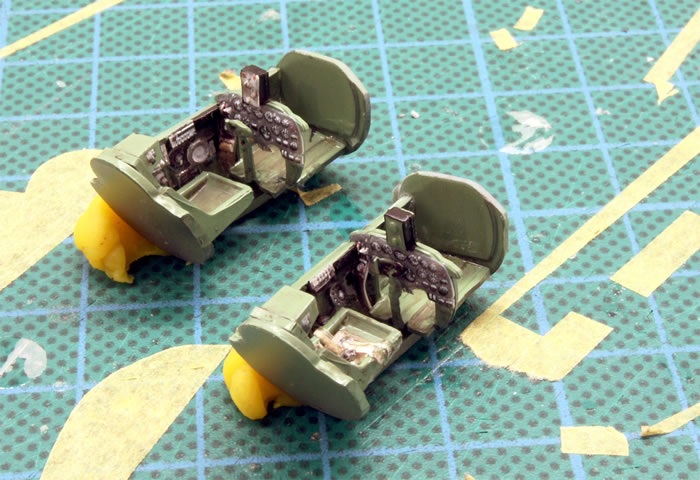
As expected, the accuracy of fit of the parts was rather mediocre, but this was not of great importance anyway, since in any case much and often filling is required. Gaps and crevices had to be tackled in part with several filler passes. Particularly affected were the zones around the air intake and the rear parts of the turbine fairings.
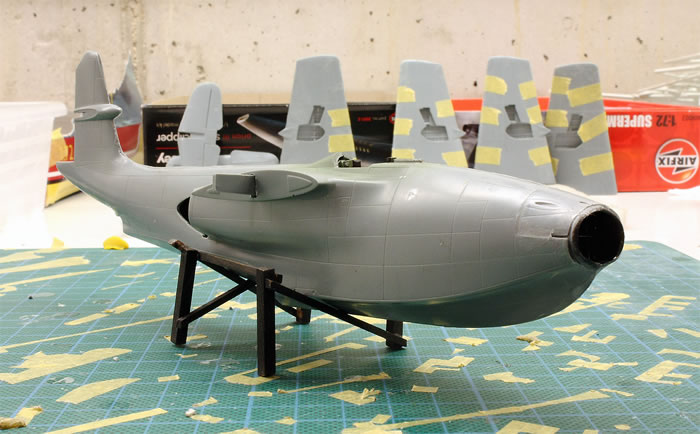
Fans of extensive putty, sanding and re-engraving will certainly get their money's worth here!
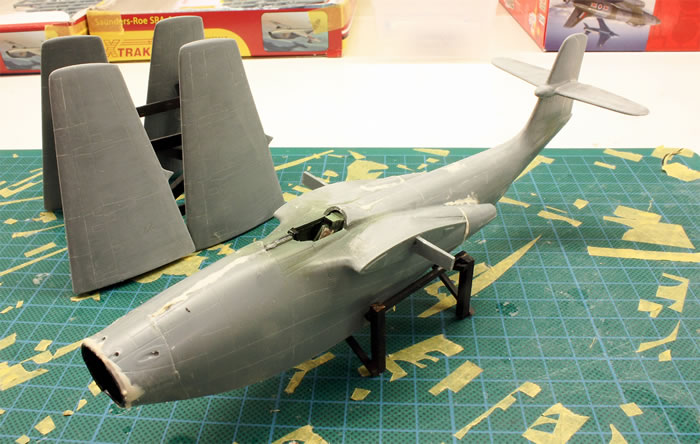
However, this is not to give the impression that this is a sloppily or even lovelessly designed kit. Quite the contrary: once you have avoided the aforementioned modelling pitfalls, you will be rewarded with the sight of a coherent and impressive model with beautifully structured surfaces.
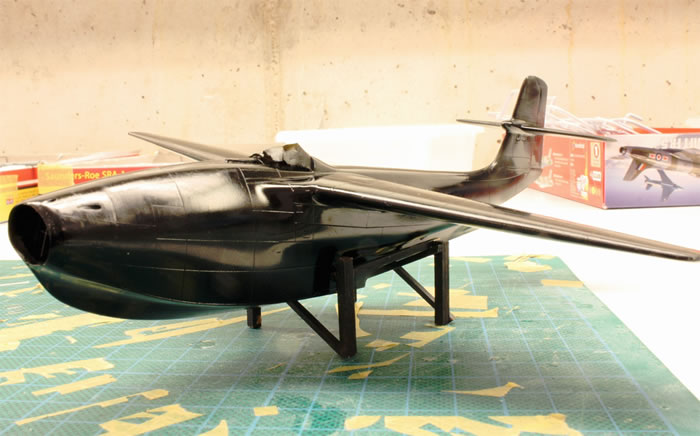
The clear parts are of very good quality and, in short, easy to assemble. However, if you want to show the canopy open, you are faced with the problem that the wall thickness of the movable clear part is much too large to be able to be pushed onto the rear canopy section.
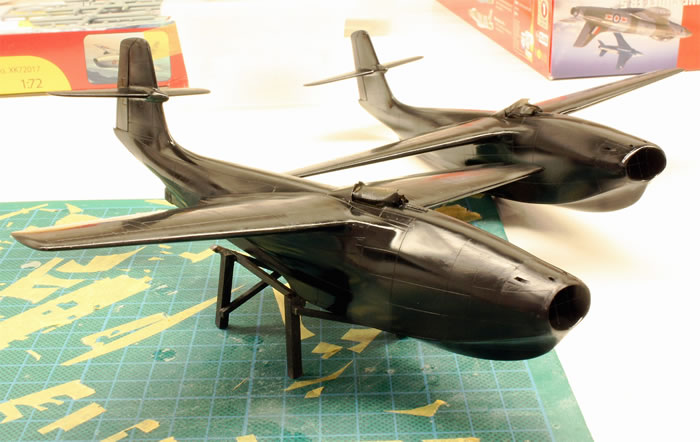
I solved the problem on both models by removing material from both the cockpit interior and the rear cockpit section until it was possible to slide the two parts over each other. As you can imagine, this removal of material was a particularly delicate task with clear parts.

The few decals turned out to be of best quality and could, not surprisingly, be applied excellently. The only ingredients I used were two Pitot tubes made of needle cannulas, furthermore I cut out the position lights at the wing tips, which are not shown at all in the kit, coloured them and filled them again with "Clear Fix".
Finally the model of the SR. A-1 stands in quite impressive size on the six wheels of the landing gear and rewards the modeller for his efforts with the sight of an impressive and truly unusual aircraft.
Did I mention that this aircraft went by the unofficial name of "Squirt"? "Squirt" in English refers to both the splash of water and a "plug", so a fitting name for this squat aircraft in which the concept of a water fighter almost materialised last time!
If you are interested in the building process, please have a look here on Scalemates:
https://www.scalemates.com/profiles/mate.php?id=10148&p=albums&album=90349
As ever, remarks will be appreciated:
ro.sachsenhofer@gmx.at
Model, Images and Text Copyright ©
2022 by Roland Sachsenhofer
Page Created 19 December, 2022
Last Updated
21 December, 2022
Back to HyperScale Main Page

|
Home
| What's New | Features | Gallery | Reviews | Reference | Resource Guides | Forum |